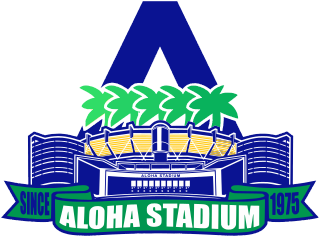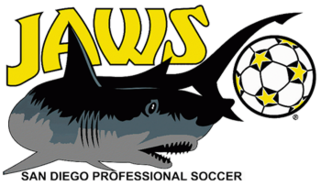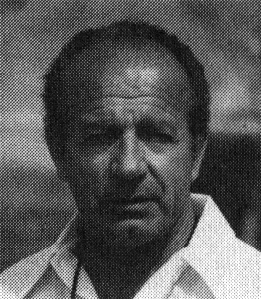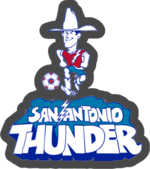
The North American Soccer League (NASL) was the top-level major professional soccer league in the United States and Canada that operated from 1968 to 1984. It is considered the first soccer league to be successful on a national scale in the United States. The league final was called the Soccer Bowl from 1975 to 1983 and the Soccer Bowl Series in its final year, 1984. The league was headed by Commissioner Phil Woosnam from 1969 to 1983. The NASL laid the foundations for soccer in the United States that helped lead to the country hosting the 1994 FIFA World Cup and the set-up of Major League Soccer (MLS) in 1996.

Aloha Stadium is a closed multi-purpose stadium located in Halawa, Hawaii, a census-designated place that is a western suburb of Honolulu. It is the largest stadium in the state of Hawaii. As of December 2020, the stadium ceased fan-attended operations indefinitely, and placed a moratorium on the scheduling of new events. It is located next to the Hālawa station of the Skyline rail system.

The Los Angeles Aztecs were an American professional soccer team based in Los Angeles, California that existed from 1974 to 1981. The Aztecs competed in the North American Soccer League (NASL) from 1974 to 1981 as well as the 1975 NASL Indoor tournament, the 1979–80 and 1980–81 NASL Indoor seasons, and won the NASL Championship in 1974. During their eight years of existence, the Aztecs played at four different venues and were controlled by four different ownership groups, European soccer legends George Best and Johan Cruyff played for the team, and from 1975 to 1977 English singer Elton John was a part-owner.

The Rochester Lancers were an American soccer team that competed in the American Soccer League (ASL) from 1967 until 1969, and in the North American Soccer League (NASL) from 1970 to 1980. The team was based in Rochester, New York, and played home games at Holleder Memorial Stadium. The Lancers won the 1970 NASL Championship and was the only NASL team to compete in the CONCACAF Champions' Cup. The Lancers could not sustain their early success, posting two winning records and a few playoff appearances before folding after the 1980 season.

The Las Vegas Quicksilvers were an American soccer team that competed in the North American Soccer League (NASL) during the 1977 season. The team was based in Las Vegas, Nevada and played their home games at Las Vegas Stadium. After the 1977 season, the team relocated to San Diego and became the San Diego Sockers.

The San Diego State Aztecs are the intercollegiate athletic teams that represent San Diego State University (SDSU). The Aztecs compete in NCAA Division I, as a member of the Mountain West Conference (MW). San Diego State University sponsors 17 teams at the varsity level.

Robert Brown Clark is a Scottish football player and coach. Clark, who played as a goalkeeper, spent most of his playing career with Aberdeen. He also played for Queen's Park, Washington Whips, San Antonio Thunder and Clyde. Clark played 17 times for Scotland and represented the Scottish League. He later became a coach, mainly working in New Zealand and the United States.
Statistics of North American Soccer League in season 1977. This was the 10th season of the NASL.
Jim Zylker is a retired American soccer player who spent two seasons in the North American Soccer League. He was also a member of the United States soccer team at the 1972 Summer Olympics.

The San Diego Jaws were a professional soccer team based in San Diego, California, playing their home games at the Aztec Bowl on the campus of San Diego State University. Founded in 1976, the team was a member of the North American Soccer League, and was the league's second attempt to place a franchise in San Diego with the Toros having folded in 1968 after two seasons. The franchise lasted only one season and relocated to Las Vegas for the 1977 NASL season.

Charlie Mitchell is a Scottish American former soccer defender and coach. He played ten seasons in the North American Soccer League from 1970 to 1979.
Chuck Carey is a retired American soccer defender who played professionally in the North American Soccer League.
The 1975 Vancouver Whitecaps season was the second season of the Whitecaps, and their second season in the North American Soccer League and the top flight of Canadian soccer.
Juan Sergio Velazquez is a Mexican retired footballer who played as a forward in the North American Soccer League and Major Indoor Soccer League.
The 1975 Tampa Bay Rowdies season was the first season of the club's existence.

Alex Perolli was an Albanian football coach best known for coaching the Los Angeles Aztecs to a North American Soccer League championship in 1974. The following season, he coached the San Antonio Thunder for 9 games before being fired, having won only one match.
The Philadelphia Fury were an American soccer team that competed in the North American Soccer League (NASL) from 1978 to 1980. The team was based in Philadelphia, Pennsylvania and played their home games at Veterans Stadium. Included in the team's ownership group were rock musicians Rick Wakeman, Peter Frampton, Mick Jagger, and Paul Simon. During the team's three years of play in Philadelphia it never had a winning record, but qualified for, and advanced to the second round, of the 1979 playoffs. After the 1980 NASL season, the team was sold and moved to Montreal, rebranding as the Montreal Manic.
The Buffalo Blazers were a soccer team in Buffalo, New York. They competed in the National Soccer League in 1976–1978 and 1980. They were one of only four American teams to have competed in the National Soccer League which was based in Canada.
The 1976 season was the original Tampa Bay Rowdies second season of existence, and their second season in the North American Soccer League, the top division of soccer in the United States and Canada at that time. Tampa Bay entered the season as the defending Soccer Bowl champions.
Luis Marotte is an Uruguayan former footballer who played as a midfielder.










